
What do Frank Hamer, Jesse James, Pat Garret, Pearl Heart, and Bob Dalton have in common?
They all carried revolvers made by the same company, and the models in question were not built by Smith & Wesson, Colt, or even Remington.
From the diminutive 32 S&W to the thundering 44 WCF, the model they carried and treasured was considered the most advanced revolver of its time, with many features that were more impressive due to the brief window in history in which they were made.
The company was known as Merwin Hulbert, and very few of their revolvers have survived the past 125 or so years.
History
Joseph Merwin was a firearms distributor of the late 19th century who sold revolvers, rifles, and shotguns manufactured by other companies under his name. His first venture of this sort was based in what was then the firearms wholesale center of the world: New York City. His first effort was known as Merwin & Bray Co. In 1873, after Bray left the business, Merwin took up with William and Milan Hulbert, who owned a 50% stake in the Connecticut-based firm of Hopkins & Allen.
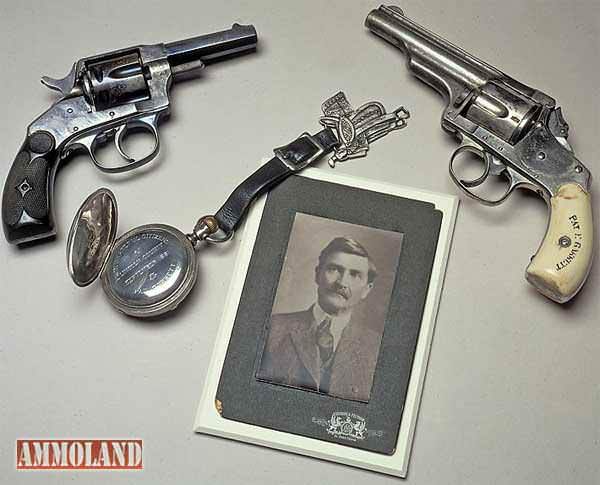
Hopkins & Allen was not known for producing the best revolvers in the world. Still, their nickel-plating process was said to be second to none, and Merwin knew he could offer superior nickel-plated revolvers for the price that other companies were offering in blue. These innovative revolvers were branded as “Merwin, Hulbert and Company, New York“, even though they were built in the Hopkins & Allen plant in Connecticut.
The new company soon acquired Phoenix Rifles, Evans Rifles, and American Cartridge Company (ACC); they were on their way toward becoming a 19th Century Firearms Conglomerate. ACC was responsible for producing ammunition with Merwin Hulbert’s own head stamp of “MH”. These rounds were actually 32 S&W, 38 S&W, 44 WCF, and a straight-walled 44 that was dimensionally similar to 44 Russian.
However due to a different bullet weight and powder charge, the round was considered unique.
Merwin Hulbert was unfortunately beset with a score of financial problems ranging from a loss of payment for three large arms shipments to Russia to the bankruptcy of the Evan’s Rifle Company and an associate of the Phoenix subsidiary stealing the majority of the company account, leaving them literally bankrupt by 1881.
The company stabilized but never fully recovered. After Merwin’s death in 1888, the name was changed to “Hulbert Brothers & Company,” and in 1896, the brothers sold their stakes to Hopkins & Allen. Merwin Hulbert revolvers were produced by Hopkins & Allen until 1916, when they, in turn, went bankrupt, and their machinery was bought by Marlin Firearms.
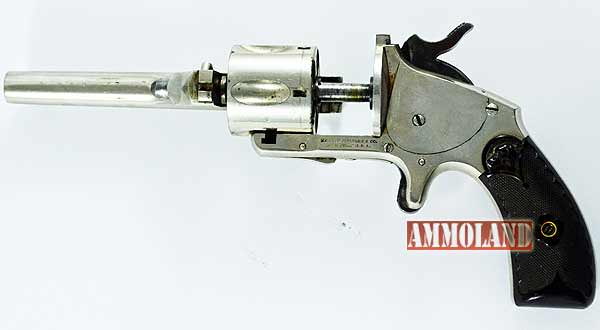
The Difference
What made Merwins so different from their contemporaries was that the revolvers opened up via a twisting action to the side instead of a break top or being a solid frame.
The cylinder is held in place by vacuum pressure and uses no springs. Likewise, the tolerances are so tight that on a loaded revolver, only the empty cases will fall free, leaving the unfired rounds in the cylinder.
A secondary benefit to this design is that the shooter can change barrel lengths without head spacing, timing, or cylinder gap issues, and the rear of the cylinder is completely covered by a cupped rim on the frame to prevent dirt and debris from entering.

Another innovation found on Merwin Hulbert double-action revolvers includes the incorporation of a folding hammer for pocket carry. This gives the shooter the option of cocking it for a better trigger pull when necessary.
The Models
The bulk of Merwin Hulbert’s revolvers were large frame centerfire double action and single action six guns intended for use on the frontier or as a military pistol. In working condition with no finish left, these revolvers sell for thousands of dollars, with pristine or engraved versions going for much more.
Common Merwin Hulbert Models:
Frontier/Pocket Army
- First Model (1876-1878)
- Second Model (1879-1882)
- Third Model (1882-1884)
- Frontier Model (1884-1886)
- Double Action Frontier Model (1886-1894)
- First Model (1872-1876)
- Second Model (1876-1884)
- Third Model (1884-1894)
Small Pocket
- First Model (1872-1884)
- Second Model (1884-1894)
Other Models
- Third Model Remington Rolling Block Rifle (1867-1871)
- Merwin & Bray Single Shot Pistol (1867-1872)
- Smith & Wesson Model 1, Third Issue Copy (1872-1876)
The author’s personal Merwin revolvers come from the medium frame lines. These were the pocket pistols of their day, and while still expensive, they can be had for a more reasonable price.
The single-action version sports a 3 ½” barrel, and its chambering of 38 MH meant it was intended as more of a pocket or hideout gun. The hammers do not fold on these miniature single-action revolvers, and they could be had with either a square or round butt.
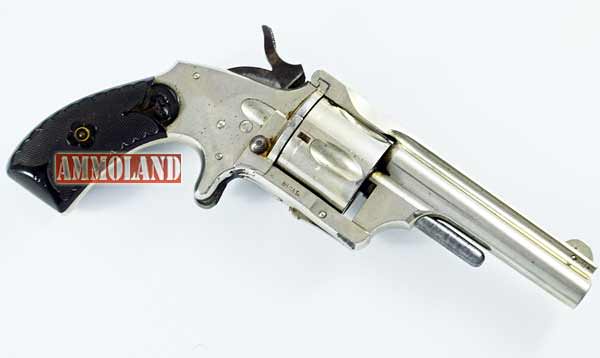

This particular example was acquired from a sporting goods retailer who dismissed it as a Hopkins & Allen “suicide special,” as that is how the revolver is marked. The price was less than $100, and its value is easily five times that.
Our second Merwin is the double action version, and it was marked “Merwin Hulbert & Company”, but as the name was not familiar to that seller, he priced it as if he would any other nickel-plated revolver from that time period, $150.
These medium-frame revolvers and the small-frame double actions chambered in 32 S&W (which held seven shots) are more commonly found than their big-bore counterparts and can be had for somewhat reasonable prices. Still, only a few thousand of each type were ever made, so the supply is rapidly drying up, and thanks to the internet, most sellers are savvy about what they have.
There has been an attempt to manufacture these revolvers using modern machinery and materials; however that venture unfortunately turned out to be mostly smoke and mirrors with a number of would-be owners losing deposits they placed for orders that will never be filled.
Some collectors disparage the smaller pocket-sized wheel guns from the 1800s in favor of the full-size “holster” models, but these little ones are precisely what Hamer and Garrett carried as lawmen in the way of backup revolvers. Texas Ranger Frank Hamer famously used his 32 Merwin in a gunfight where he emerged as the victor, proving that the diminutive 32 will get the job done with mere black powder loads if the shots are placed correctly.
In 2009, an attempt was made to revive the brand, but like the Merwins of old, the dream was deferred, and a parent company (Broadsword Group) was left to the task of refunding deposits for revolvers that were never produced. A number of companies have been in the planning stages to make their own versions, but until that becomes reality, all we are left with are these handsome relics of the late 19th century.
More on the Merwin Hulbert brand:
About Mike Searson
Mike Searson’s career as a shooter began as a Marine Rifleman at age 17. He has worked in the firearms industry his entire adult life as a Gunsmith, Ballistician, Consultant, Salesman, and Author and was first certified to teach firearms safety in 1989.
Mike has written over 2000 articles for a number of magazines, websites, and newsletters, including Blade, RECOIL, OFF-GRID, Tactical Officer, SWAT, Tactical World, Gun Digest, Examiner.com, and the US Concealed Carry Association, as well as the best of them all… AmmoLand Shooting Sports News.
- Home page: www.mikesearson.com
- FB: www.facebook.com/mike.
searson - TWITTER: www.twitter.com/
mikesearson

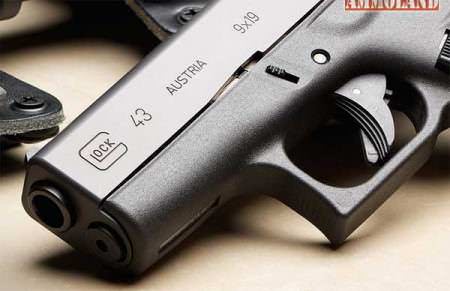
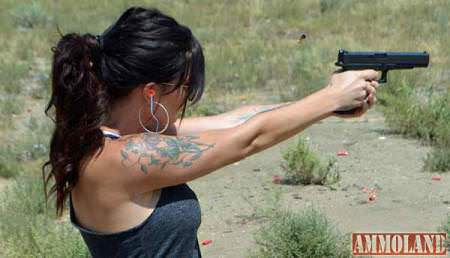
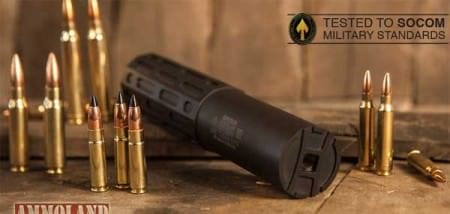
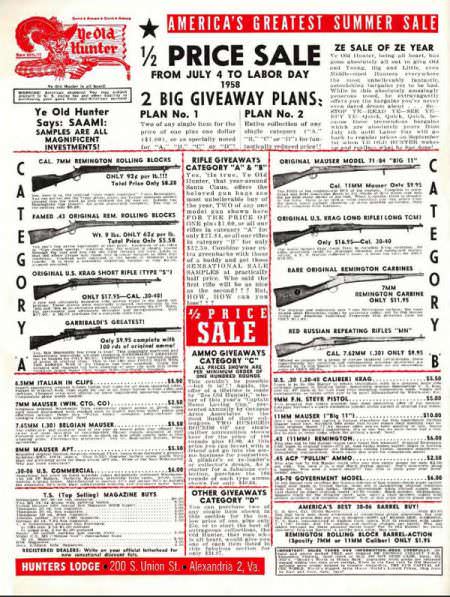
Anyone who has read the Hopalong Cassidy novels has heard about Merwins. When I read references to them, I looked them up and was surprised to learn how popular and well made they had been.
Wondering if someone can help me to identify the revolver given to my by my grandfather. He wore it during WWII as his sidearm. It looks like an M&H.
https://photos.app.goo.gl/aA8XUgyvcriLaWQ28
Thank you in advance.
Sorry, I can’t identify it, but it looks French or Belgian to me. I’m guessing 1880-ish.
I own a third model Merwin Hulbert .38 nickel plated but the spur is missing.I am having trouble finding ammo for it but I did find some Magtech .38 S&W with low grain. Would it be safe to shoot it?
When in doubt, have a competent gunsmith evaluate it, if you live in a gun-friendly part of the world. If not, I wouldn’t risk it.
I have a M&H 32cal pistol with 2 number matching barrels. It is nickel plated and I would put it at a 7 out of 10 condition! I’m interested in selling this item so please contact me at my e-mail address and I will send photos!
Do you know of anyone who sells ammunition or cases and or bullets for the .44 or .32 M & H? I know that they were designed to use a heeled bullets.
I recently bought an early large frame, square butt, open top, single action 7 ” barrel model. Trying to determine what it is chambered for – either 44 M & H or 44 Russian. The left side of frame simply marked CAL 44. Flaydermans says the typical markings for 44 Merwin appear as 44 M & H and for 44 Russian appear as RUSSIAN / MODEL. Of course for 44.40 WCF the marking would appear as CALIBRE / WINCHESTER 1873. None of these appear on my piece. Simply CAL 44. Do you have any idea which shell chambering this marking… Read more »
Very interesting article Mr Searson. I have recently acquired a Second Model Pocket in 38 M&H. Excellent bore and working order with maybe 95% nickle remaining but of interest it is in the original cardboard box. The box is in very good condition and has the maker’s details and loading instructions inside the lid and and describes it as “New 38 Revolver – Automatic Ejector”. Ross.
I own a merwin Hulbert 38 cal. pocket revolver with folding hammer, double action, blue finish and am interested in selling it. reply if interested.
Tell me what you have, might be interested. Thx for the post. Scott
I am a connesuer of `19th century firermams i have owned a Colt Walker a 3rd model dragoon , also a Remimgton new armyi , the Merwin Hulbert has eluded me , i have held one , no doubt in my mind it is the fine st revolver made then and now ! ItM would be nice if UBERTI COULD REPRODUCE THEM HON Paul B Binkley
I have a 1873 Calibre Winchester that I would like to get appraised. You so point me in the right direction. I live in California
I have a .32 caliber, 3 in. barrel revolver with the recessed hammer, in good condition for sale if anyone is interested.
I have the 32 pocket pistol. Would like to find some ammo to go with it. It’s in very good condition for the age. Better than the one pictured above.
I have a small frame 32 cal. The spurs on the back side of the cylinder are worn along with the part that turns the cylinder. What I’m trying to say is that when the trigger (which is a folder ) is pulled the chamber doesn’t always line up with the barrel. It was originally a nickel plated revolver that was peeling off. Originally my uncle gave my dad 2 of them. Then my other uncle borrowed them and they came back blue.I would like to know if someone can restore it to the original working firearm and about what… Read more »
I own a second model frontier in 44merwin sporting factory Ivory grips and the factory shoulder holster that it shipped with as well. The Merwins are a really cool firearm and very different from the original model 3 S&W or the original Remington 1890 I own as well. Just one thing is finding ammo or even the loading components to handload for it as well.
Billy
great article. Thanks!
I placed an order for a “modern” M-H and paid for it in full.
After the venture went bust and things got sorted out, I received a prompt 100%, full refund.
I would have rather had the revolver than the dough.
Merwin Hubert.The finest revolver I have heard about ,seen ,and shot . Wish I had one in 357 mag.but can’t afford one.Or find one
Awesome article Sir!!! 🙂